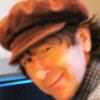Crafting Continental Studios: How Julie Berghoff Built Seth Rogen’s Fictional Production Powerhouse in “The Studio”
In The Studio, the fast-talking movie executives who make and sell motion pictures to mass audiences might use “on the nose” as a pejorative. But sometimes, the obvious solution can’t be denied. For show creators Seth Rogen and Evan Goldberg, there was only one place to set their behind-the-scenes look at how cinematic sausage gets made: Warner Bros. Studios.
The Burbank, California backlot serves as headquarters for the fictional Continental Studios. Run by Rogen’s Matt Remick and his fractious minions (Ike Barinholtz, Catherine O’Hara, Patty Leigh, Chase Sui Wonders, and Kathryn Hahn), the studio co-exists in an alternative universe alongside the “big five” Hollywood dream factories that originated in the 1920s. Rogen and his team enlisted production designer Julie Berghoff to make his imaginary fiefdom seem authentic. “What I was trying to do is to create a space that allows the audience to feel the lushness and the history of a real Hollywood studio,” says Berghoff, who won a 2017 Emmy for designing The Handmaid’s Tale.
Speaking from Atlanta, where she’s working on an Amazon Prime project, Berghoff explains how Frank Lloyd Wright, mid-century modern master John Lautner, and a 9,000-square-foot soundstage served as the foundation for a 2025 incarnation of old-school glamour.
In designing Continental Studios, you basically created a home base for the entire series. How did you arrive at the look?
I researched the Big Five [Warner Bros., Paramount, Universal, Disney, and Sony Pictures], looked at where they came from, and how their backlots were set up. We needed to know what already existed out there and then figure out how Continental fit in with the Big Five.
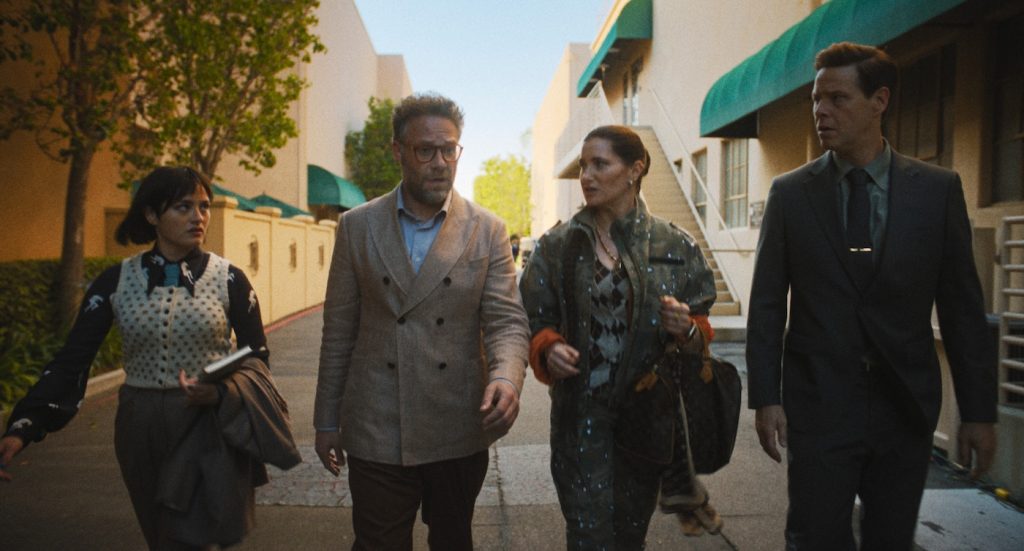
So Continental Studios needed to evoke some of that old school 1920s-1930s vibe while having its own identity. Architecturally, who did you turn to?
We decided we wanted the studio to be designed by the American architect Frank Lloyd Wright, who came to California in 1915 and was influenced by the Mayan revival at the San Diego World’s Fair. We liked the materials he used at the time, and also liked the feeling of the architecture being kind of tomblike, which correlated with the way filmmaking has its ups and downs. We also wanted the studio to have a very strong, angled structure that felt heavy.
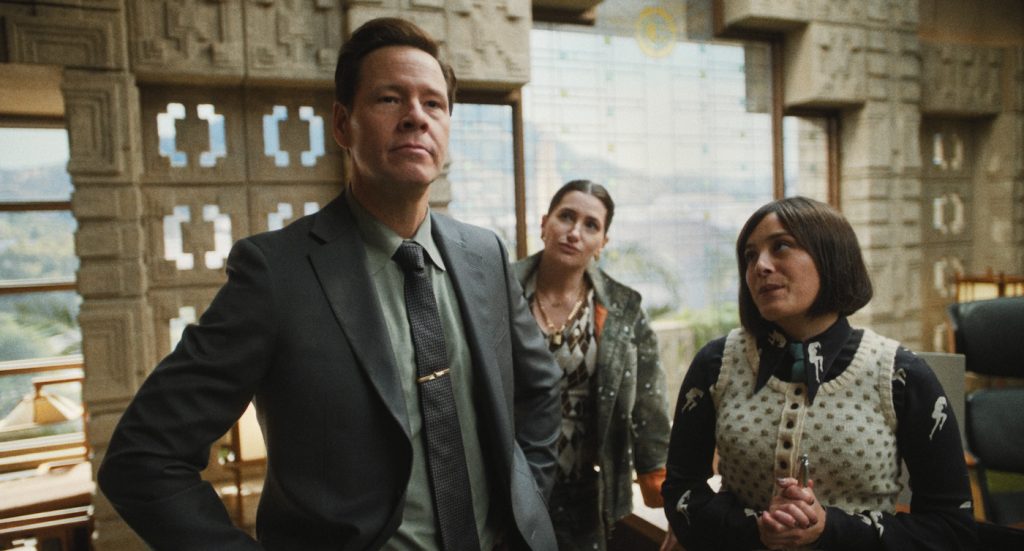
Where did you build the space?
It was built from scratch on Stage 23 on the Warner Bros. lot.
How did you prepare for the construction?
As always, I started out with a complete ground plan, then made a rough three-D model that I taped onto our stage floor. It was almost 9,000 square feet, and we had a seven-week build. I wanted most of it to be made of plaster, because you can mix in the colors you want [with the plaster] and then just seal it with paint, which helped because I was also set decorating, so this was fast and furious. We painted that beautiful ceramic floor in earth tones, like sandstone, and I mixed emerald-colored glass specks into the plaster, so if the light hits the floor in a certain way, it feels a little bit like the Emerald City.
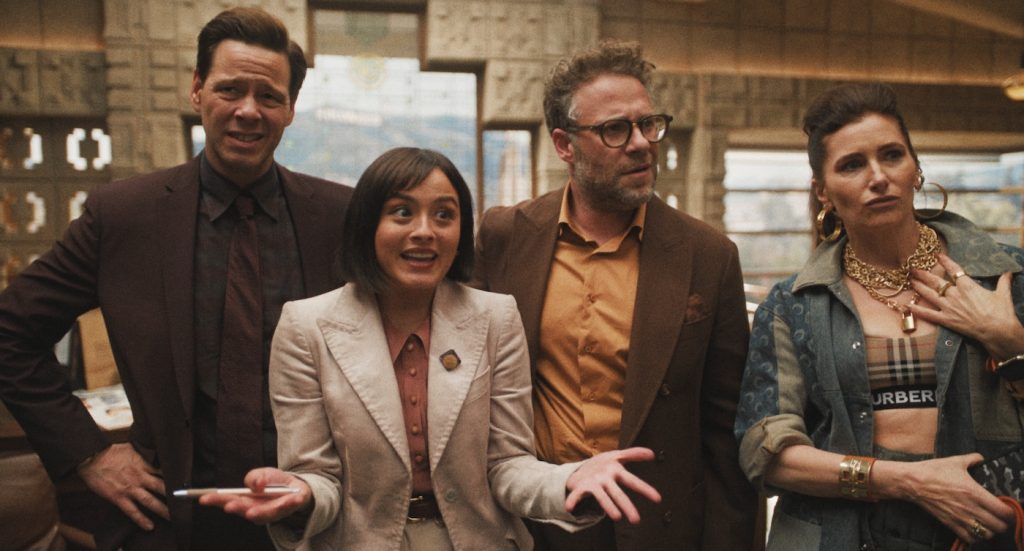
It looks like the studio lobby is packed with details.
We did little pockets of storytelling with Claire Coffman, my decorator, almost like a museum with little remnants of the studio’s history, like the last Oscar they won or a hat that Elizabeth Taylor would have worn. I also put Cucoloris in the window that had the branding of Continental.
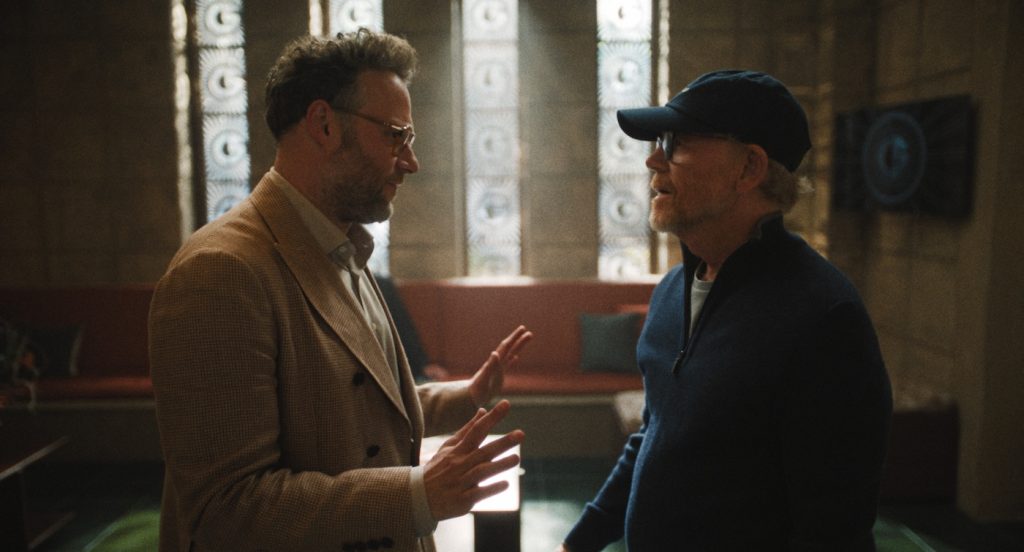
What is Cucoloris?
It’s a film term for a mesh ornamental device in a window that translates a design so that when sunlight comes through the window, it projects a shadow of the design into the space. I designed a Cucoloris with the letter “C” for Continental.
So, you built the interiors for Continental Studios on the soundstage. Where did they situate the exterior, which we see every time Matt walks up the stairs into work?
The exterior was built literally on the steps to the Warner Bros. Television building. I drove all around the lot and decided that the building was best suited for the exterior. I built the first story of the exterior and basically snugged it in between the trees. When Seth drives up in his golf cart, walks up the stairs, and goes through the doors, that’s when we cut into our stage set.
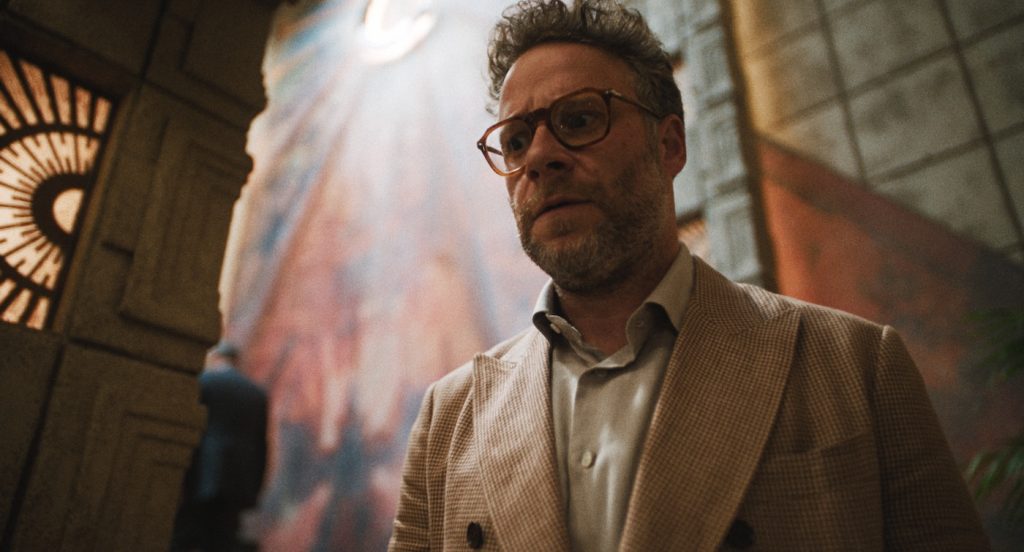
In “The Oner” episode, everything is shot in one continuous take while Sarah Polley directs a movie on location at this glamorous L.A. house. Where did you find that home?
That’s the Silvertop house in Silverlake, designed by John Lautner, also known as the Reiner-Burchill Residence. I lived in Silver Lake for 15 years and walked past that house many times. It’s at the top of Micheltorena Street and looks down over the Silver Lake reservoir. The house changed hands two or three years ago and became available, so that’s definitely a house I suggested. Stacey Buckner, my location scout manager extraordinaire—she and I scoured a lot of architectural houses for each character.
Ex-studio boss Patty, played by Catherine O’Hara, also has a great-looking mid-century modern home where she yells at Matt for stealing her job.
Patty’s house is actually Kelly Lynch’s home, also by John Lautner. We wanted to shoot at a different Lautner house, but there was construction going on, so Catherine helped us get in there. Kelly was very gracious about letting us into her home. The view was spectacular, and then we showed Patty dragging Matt from room to room. In this show, the characters are always moving.
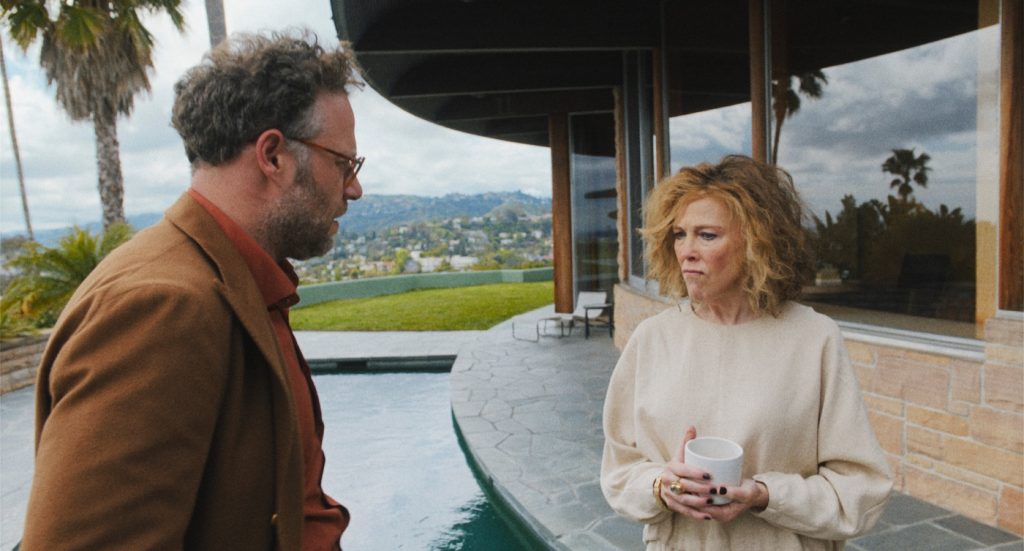
Nobody’s sitting still, that’s for sure.
Seth told us, “Coffee is very important to me,” so the coffee station we put in his office had to be a very authentic Italian espresso machine that didn’t make noise but made bad-ass coffee. We always needed to have certain things for our locations: beautiful views, great mid-century houses with movement through their spaces, and a lot of light.
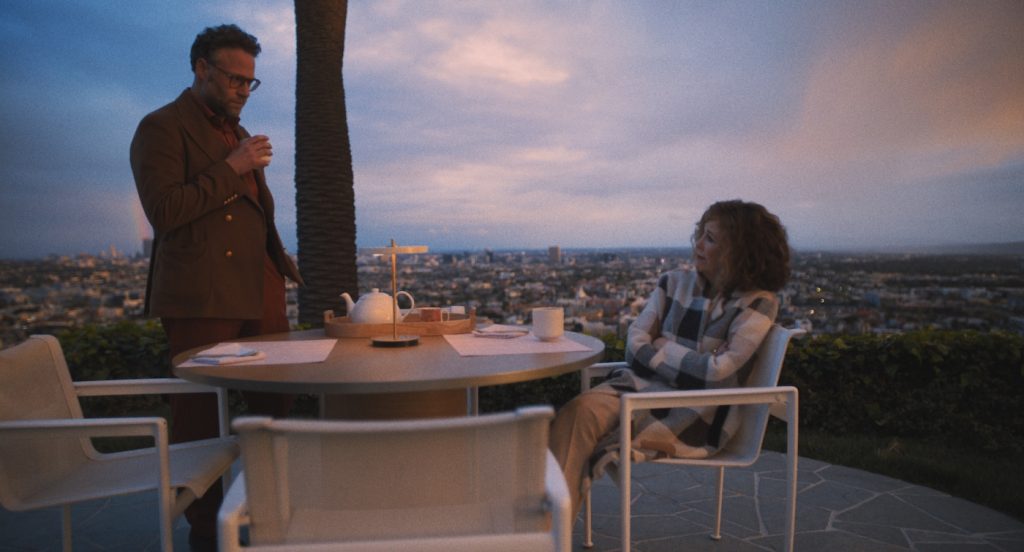
The Studio shoots in Los Angeles, where you live. Did you appreciate being able to work locally with a local crew?
I’ve never worked anywhere else in the world with as much love for filmmaking, professionalism, and craftsmanship as Los Angeles. To see all these working people toiling away on something we pictured for our story, and then to be there on the studio lot for five or six months straight? That was like a dream come true.
How did you take advantage of Warner Bros. backlots to shoot movie snippets within the show, like the Paul Dano action movie, Ron Howard’s film with the boring ending, Alphabet City Street, or Johnny Knoxville’s projectile diarrhea zombie movie Duhpocalypse?
The Paul Dano action movie was filmed on Midwest Street. For the Ron Howard movie Alphabet City, I looked at Taxi Driver for [inspiration], then I’d just go round the backlots and suggest “How about if we do this one here, that one there?” A lot of scenes involved Matt on his golf cart driving to the sets, so we gave that a lot of thought.
Were you able to use the studio’s various departments to dress the sets?
Yes. It was really fun to create these little stories outside the stage doors. Christmas! Gladiators! Robots! We’d ask set dec: “What do you have ten of?” We were literally using what Hollywood is famous for – prop houses, costume departments, and wardrobe – and then leaning on all these assets that have accumulated for years to be able to tell stories within the stories.
The Studio is streaming in its entirety on Apple TV+.
Featured image: L to R: Ron Howard, Anthony Mackie, Chase Sui Wonders, Seth Rogen and Catherine O’Hara. Photo: Apple TV +

